As an Amazon Associate I earn from qualifying purchases.
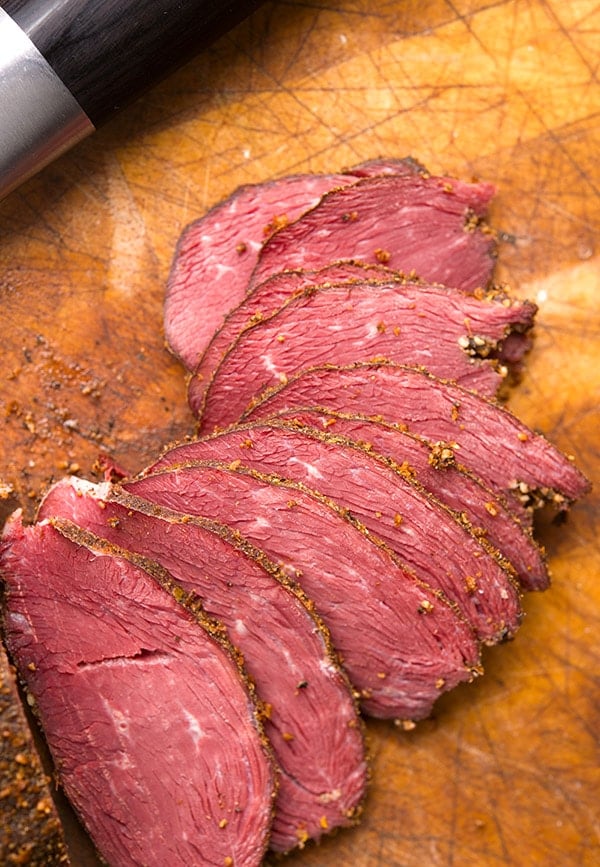
Goose pastrami is what I do with most of my Canada goose breasts. It is an easy project that makes the most out of these often-tough slabs of meat.
Why geese? Well, Canada and snow geese are very close to grass-fed beef in flavor (they eat the same thing), they have large, easy-to-work-with breasts, and they do have a tendency to be tough, which means that any way you can cook them that lets you slice the breasts thinly is a good thing.
Pastrami, in case you’ve never had it, is a cured meat from Eastern Europe or Turkey — remember the Ottomans ran Eastern Europe for a while — that’s normally beef or mutton. Although here’s an interesting tidbit from Wikipedia: “Among Jewish Romanians, goose breasts were commonly made into pastrami because they were inexpensive.”
So there ya go. This is traditional!
To make pastrami, you dry cure (sometimes brine) the meat for a few days, dry it a bit, coat it in the characteristic black pepper and coriander and then smoke it. Sliced thin on a sandwich, it’s God’s gift. Good pastrami at a Jewish deli is something you must eat at least once before you die.
If you have any goose breasts in your freezer, go for it. A pastrami on rye with good mustard, a slice of cheese and maybe some sauerkraut, and you got yourself some awesome there!
Once you make your pastrami, it will need to be eaten within a week or two, or you’ll need to vacuum seal and freeze it.\
Goose Pastrami
Ingredients
- 2 skinless Canada goose (or domestic goose breasts
- Kosher salt see recipe notes
- 3 grams Instacure No. 1, good for up to 3 pounds of goose
- 1/2 teaspoon dried thyme
- 1/4 teaspoon celery seed
- 1/4 teaspoon caraway seed
- 1 teaspoon sugar
- 1/4 teaspoon crushed juniper optional
- 1 teaspoon ground black pepper plus 1 tablespoon ground black pepper
- 1/4 cup brandy red wine, vinegar or water
- 1 tablespoon ground coriander
Instructions
- Weigh your goose breasts. For every pound of goose, you'll need 10 grams of kosher salt, which is about a tablespoon. It's OK if you are a little off on this measurement. Mix the salt, curing salt, sugar as well as the thyme, celery seed, caraway, juniper and the teaspoon of black pepper and grind them all together in a spice grinder. Pack the goose breasts with this mixture, massaging it into the meat. Put the goose into a closed container in the fridge for 24 to 72 hours.
- When you are ready, rinse off the goose and pat it dry. It's fine if you have a little bit of the cure stuck to the meat, but you don't want too much. Put the goose breasts on a rack in the fridge and let them dry uncovered for a day.
- Dip the goose into the brandy -- or really any other liquid you want -- and then coat thoroughly in the remaining black pepper and ground coriander seed. I like to grind this myself so the texture is a little coarse, a little fine.
- Smoke the goose breasts until the interior hits 140°F, which takes me about 3 hours.
- Let the goose pastrami cool and eat as lunch meat, or on crackers or whatever.
Notes
Nutrition
Nutrition information is automatically calculated, so should only be used as an approximation.
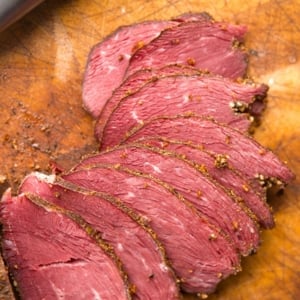
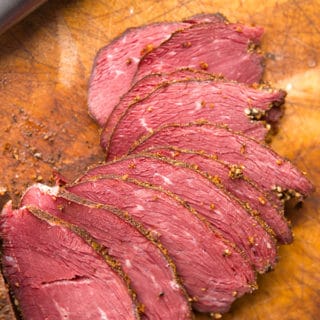

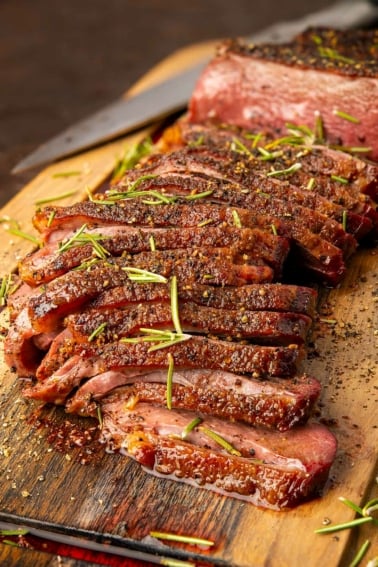
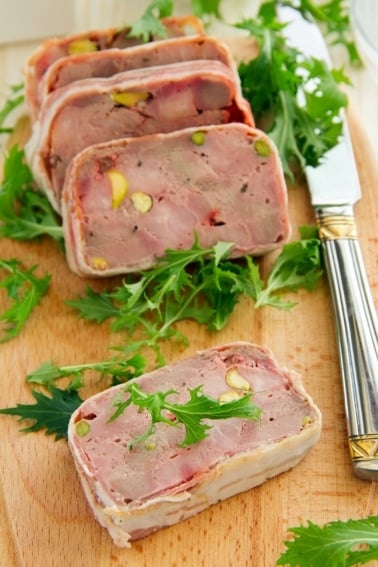

1st time preparing this . Excellent and easy!
really nice recipe Hank, thats a keeper…
Introduced several people to goose using this recipe on New Year’s Eve, and it was a huge hit. I’ll be making this as often as possible in the future. I couldn’t find the instacure in 3 local grocery stores, so I used ground celery seed instead.
I use this recipe for duck all the time as well as goose when i have it and it is awesome every time!
Fabulous recipe, easy enough to follow instructions and make for large scale smoking when doing up 15lbs at a time. Working on a second batch this weekend since it was such a big hit the first time around. Great alternative for friends who can’t eat beef 🙂 they never knew goose could be so tasty!!
This is my go to recipe for Canada geese. Sooooo delicious!!
So good sliced thin on a sandwich with some caramelized onions and creamy horseradish!
Made this yesterday for the first time. The flavour is delicious! However, mine turned out a little like jerky in texture. I was hoping it would finish more like a lunch meat. Any suggestions to help with this for next time?
Matt: Yes, smoke at a lower temperature for less time. Maybe insert a probe thermometer and pull the meat when the interior hits 135F
Thank you! I smoked at 175 using a probe thermometer and pulled the meat at 140. I’ll take both temperature recommendations into account next time (which will be soon – it did not last long around my family!)
One thing I do is always put a container with water under the rack when smoking. Seems to help avoid having the meat dry out.
Also use a reliable meat probe to monitor the temperature no matter what. Some meat probes are inaccurate.
Anyway, great recipe.
Shaw I have some huge free range turkey breast. (The birds were 40lbs) what are your thoughts on using these for pastrami?
Butch: Never tried it with turkey. Might end up dry, so you’ll definitely need the cure and then smoke it gently to an internal temp of about 150F.
Man, that’s good.
Nice blend of spicy and smoke. I tried to follow the recipe exactly and it worked out very well. Will definitely make this again!
If you’re using a Bradley, do you have the pucks smoking the entire time?
Bill: I do, yes.
Fantastic recipe that I will make again and again. Mine doesn’t quite look like the picture but it’s delicious. I did 4 goose breasts. Brined for 24 hours, dried in fridge 24 hours and smoked for 4 hours at 180 because 160 just seemed so low. I was nervous about it but I think 4 hours at 160 or 3 at 180 next time. My daughter said it was too smoky for her but she liked it and she hates pepper!! my husband said it was perfect. He took a baggie of it to work to share. Thanks for your recipe.
Yet another amazing recipe; thank you Hank.
still learning with a new smoker. easy recipe. good results will be great results next time. it was late and I turned up the heat after close to 5 hours in the smoker.
internal temp jumped from 130 to 155 quicker than I thought it would.
Just tried this with snow goose. Did 6 breasts to have almost 3 pounds. It would definitely work better with Canadians. With so much surface area on smaller breasts it was hard to get a good coat of cure on. And it took way more coriander and pepper to dust them before the smoker.
This turned out absolutely amazing <3
Thanks for a great recipe!
If you slice it too thick and the result is tough to chew, try giving the meat and other classic Reuben ingredients a whirl in a food processor. Then grill a Rueben “salad” sandwich.
Lights out!
Would this recipe work with duck breast?
Kevin: Maybe a big domestic duck breast, but most wild duck breasts are just too small for it.
I have my geese “corned”, going to throw them on the smoker, then lather with bacon fat, vacuum seal, and Sous vide at 140 for ? Not sure on the time. Any suggestions?
I’ve been wanting to make this for a long time, but despite several attempts had never shot a goose until last week. As my dog was completing the retrieve I was already getting excited to try this recipe, and it did not disappoint. I brought some to a potluck social with non-hunters and everyone really enjoyed it. Highly recommended!
I do have a question for Hank about the dry cure process. This was my first time doing a dry cure. Usually with wet cures you want to get a very specific concentration of the instacure in your brine to keep the nitrates within the safe range (not too high or low). I was a bit surprised that this recipe uses a fixed amount of instacure for “up to three pounds” of meat. I would think you should vary the amount based on the weight of the meat. How does that work?
Dont use a fixed amount .25% cure for meat weight
Is it possible to make this recipe with the skin on?
Frank: Yes. Just proceed as normal.